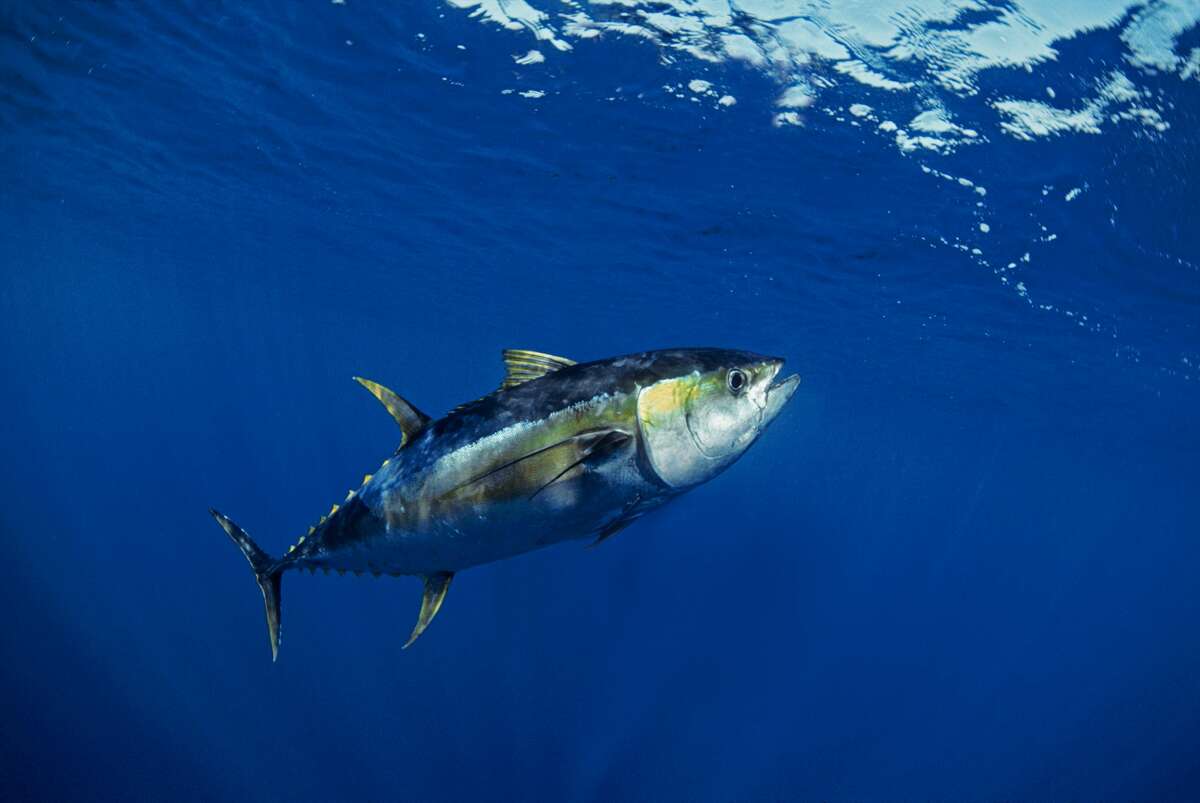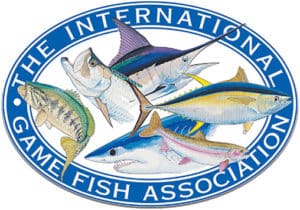Contact us if your target is Yellowfin Tuna in Costa Rica
See our Yellowfin Tuna Photo Gallery

Yellowfin Tuna
Yellowfin tuna, also known as Thunnus albacares, is a species of tuna found in the open waters of the tropical and subtropical oceans worldwide. They are a large fish, typically reaching weights of around 100-150 pounds, but can grow up to 400 pounds. They have a dark blue back and silver sides, with a yellow fin and tail. They are a highly sought-after species for sport fishing, as well as for commercial fishing.
Yellowfin tuna are fast swimmers and can be found in both pelagic and coastal waters, typically in schools. They are known to be opportunistic feeders, consuming a variety of prey such as squid, crustaceans, and small fish.
Yellowfin tuna are often caught using methods such as trolling with lures or bait, casting with jigs or poppers, and live-baiting. They are considered a challenging species to catch due to their speed and strength.
In terms of conservation, yellowfin tuna populations have seen declines due to overfishing and bycatch in commercial fishing operations. Several measures have been implemented by regional management organizations to improve the sustainability of yellowfin tuna fisheries, including quotas and size limits. However, illegal, unreported and unregulated fishing is still a major problem for yellowfin tuna populations.
In the Costa Rica North Pacific coast the best time is usually between August and October, but it can be fished throughout the year. Yellowfin tuna is a favorite of fishermen. In the Central Pacific coast it can be found every month of the year, especially from June to September. In the Southern zone its best season coincides with Marlin and sailfish, but it can appear at other times of the year.
It reaches the maximum size of 94 inches, but it is common to find it when they approach 59 inches with weights of 388.89 pounds.
It can be found to depths of 1500 feet, although it is more frequent around 330 feet. It is a highly migratory species.
It has a strong tendency to form concentrations, more by size than by species, that usually occur in waters near the surface. The schools can be integrated by one or several species, even Costa Rica are observed along with dolphins or floating objects and debris.
It feeds on school fish, mainly mollusk’s and crustaceans.
General characteristics of Yellowfin Tuna
This tuna is quickly identified by presenting a dorsal, pectoral and long back fin, the dorsal fins are barely separated by a small space, the first one has 11 to 14 spines and the concave, second dorsal and back margin are similar, with the distal profile also concave and both followed by 7 to 10 pinions.
Dark blue metallic back, turning yellow to silver on the sides and belly, can ventrally have about 20 white lines, “broken”, almost vertical. Dorsal and rear fins, including pinions, bright yellow, pinules with a narrow black border.
Reproduction of Yellowfin Tuna
Fish larger than 120 cm are sexually mature and their age corresponds to about 24-36 months, but varies by region. They reproduce throughout the year in the central areas of their distribution. The spawning period is most intense when the temperature rises in the northern and southern hemispheres, respectively. In the Atlantic Ocean two breeding groups were detected: one that spawns between the months of May and August in the Gulf of Mexico and another that does so from July to November in the Caribbean Sea.
In Costa Rican waters, spawns twice a year, releasing several million eggs that, like the larvae, spend a short period as part of the pelagic communities. According to her size, a female releases 5 to 60 million eggs a year6. Eggs (like larvae) are pelagic, spherical, transparent and floating.
Method to catch Yellowfin Tuna
Its catch in sport fishing is by trolling using Bonito as bait but different lures are also used.
Location of Yellowfin Tuna in Costa Rica
It is found throughout the Pacific coast of Costa Rica and also on the Caribbean coast. The area of Tamarindo, Guanacaste is a favorite for many.
About Yellowfin Tuna Fishing
Yellowfin tuna is a species of marine fish found in tropical and subtropical waters around the world. They are known for their high-quality meat, which is often considered a delicacy, and their strong fighting ability when hooked. Yellowfin tuna are also known for their bright yellow dorsal and anal fins, which give the fish its name.
Yellowfin tuna fishing typically takes place in the open ocean and can be done from both large commercial fishing vessels and smaller private boats. Anglers and commercial fisherman typically use specialized equipment such as heavy-duty fishing rods and reels, as well as specialized lures, baits, and trolling methods to attract the fish. Live bait, dead bait, or artificial lures can be used to attract Yellowfin tuna, and trolling is the most common method to cover large areas of the sea.
Yellowfin tuna can also be caught using other methods like jigging, chumming, and kite fishing. Jigging is a method of catching fish by using a jig, which is a type of artificial lure that is designed to mimic the movement of a live baitfish. Chumming is a method of attracting fish by spreading a mixture of fish scraps and other materials in the water. Kite fishing is a method of catching fish by using a kite to fly a bait or lure over the surface of the water.
Yellowfin tuna are considered a prized catch for sport and commercial fisherman due to their high-quality meat and their strong fighting ability. However, overfishing and unsustainable fishing practices have led to declines in some areas. Therefore, conservation efforts have been implemented in some regions to protect these fish and ensure their populations remain sustainable.
It is also important to note that Yellowfin tuna fishing can be physically demanding, as they are strong fighters and can put up a long and hard battle once hooked. International Game Fish Association (IGFA) has specific rules and regulations for anglers to follow while catching yellowfin tuna and other big game fishes.




